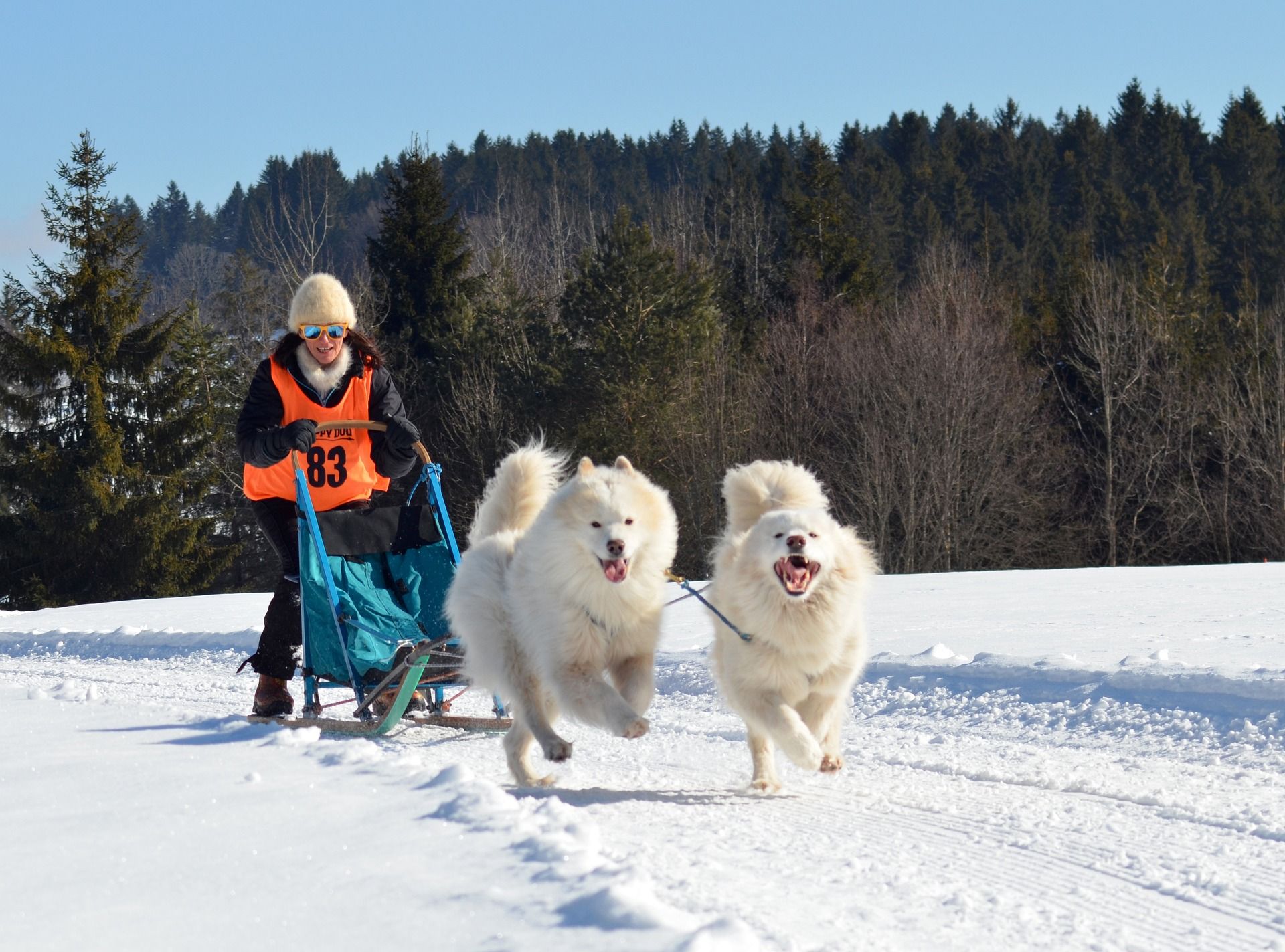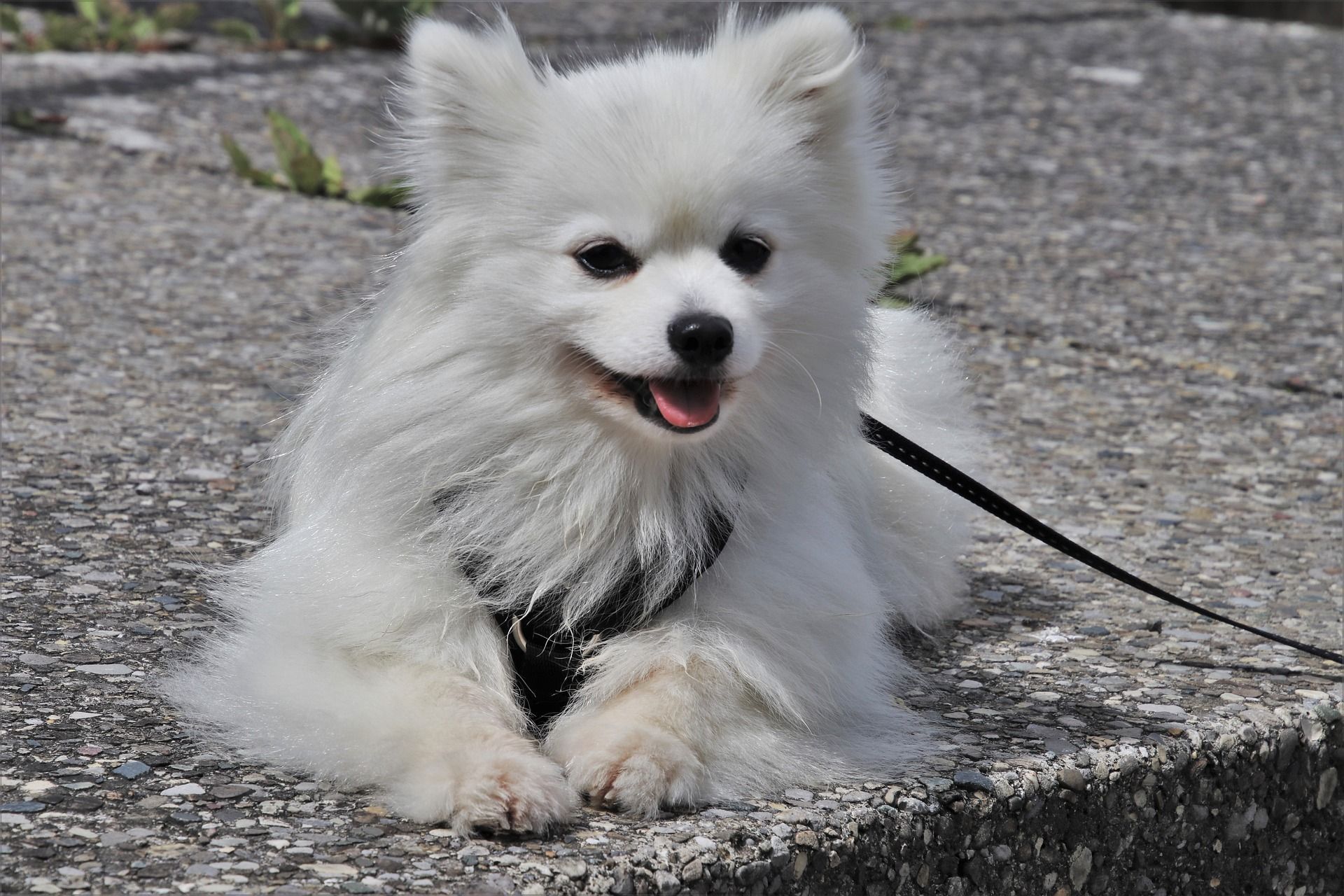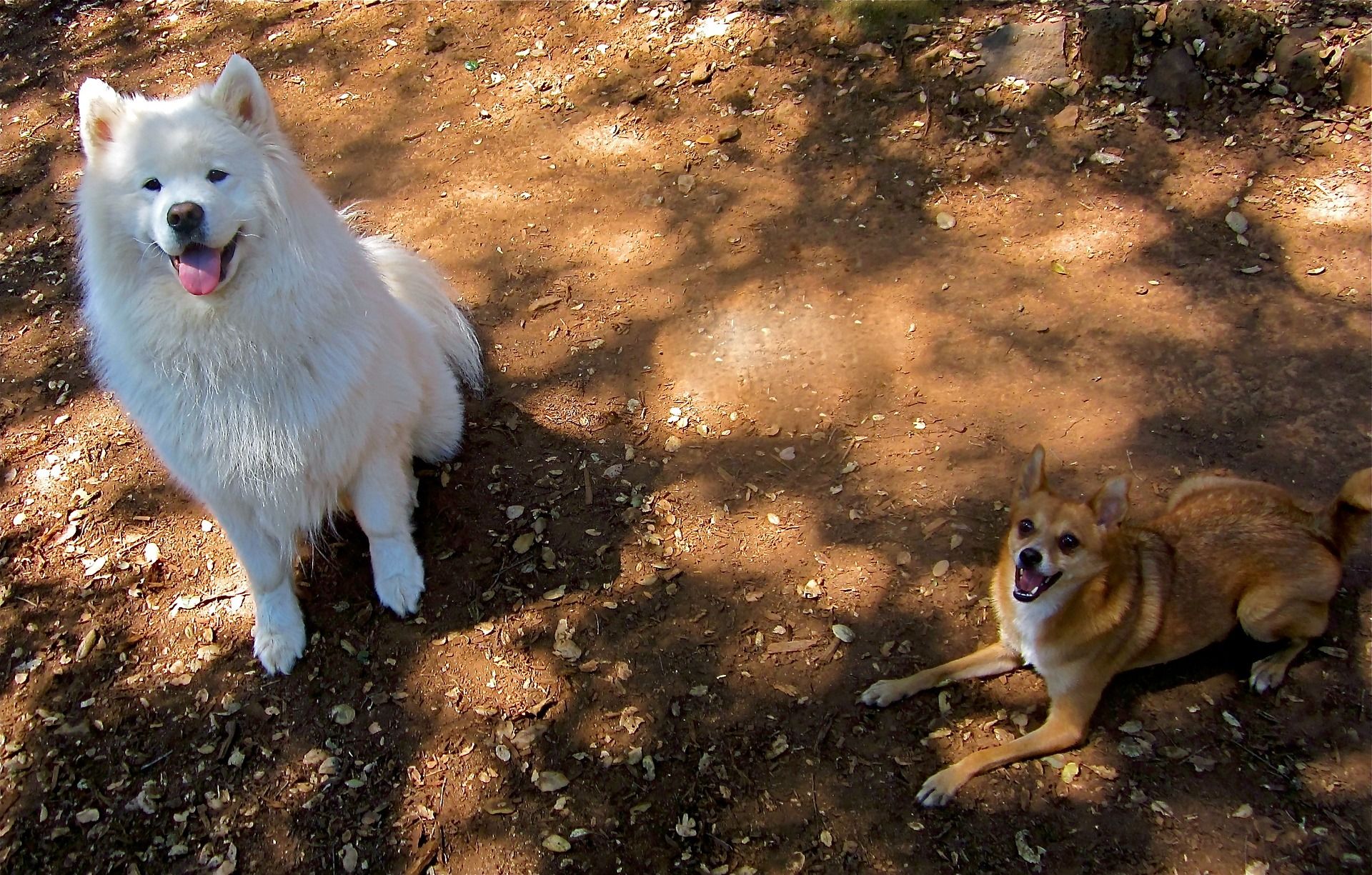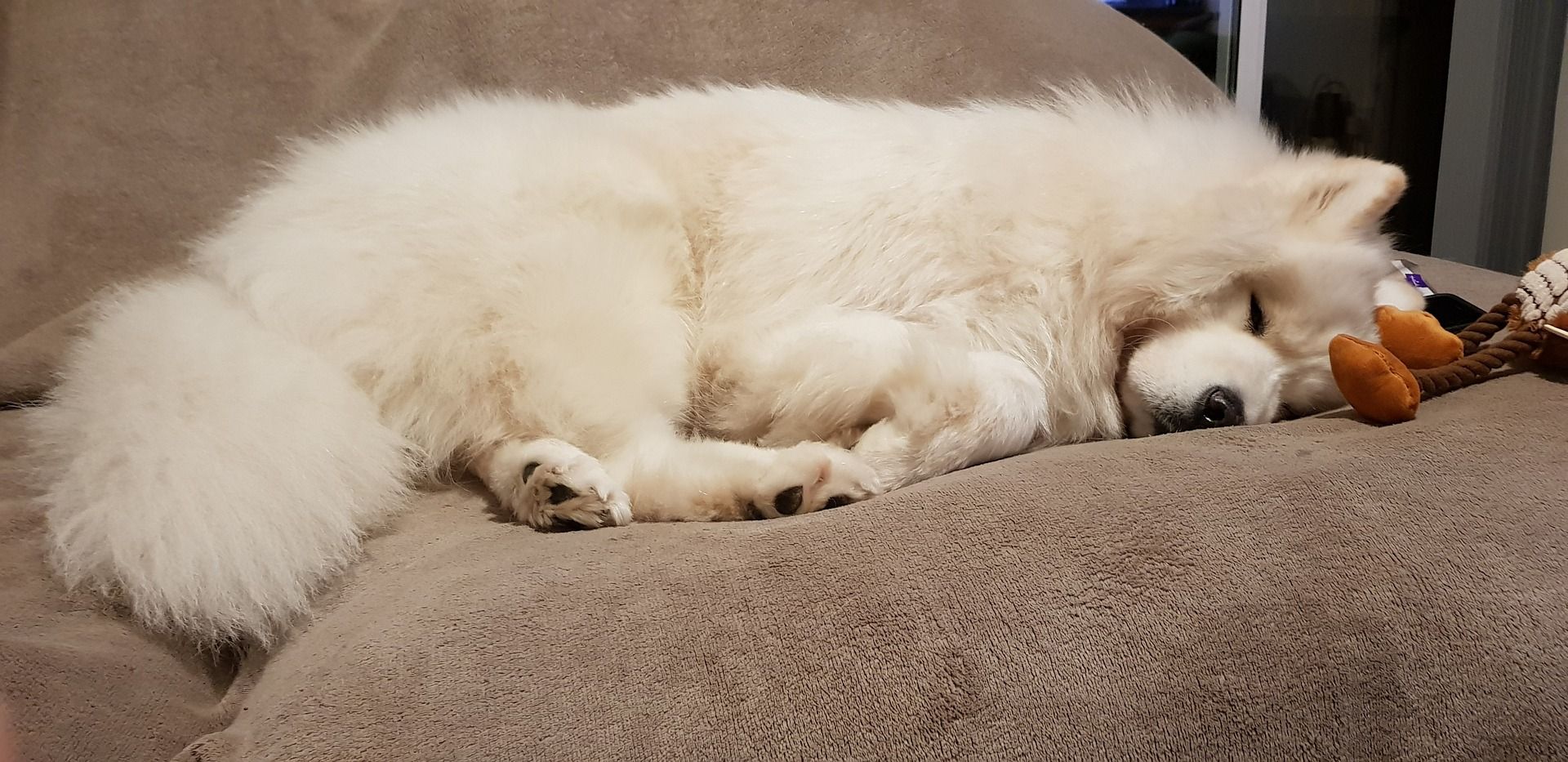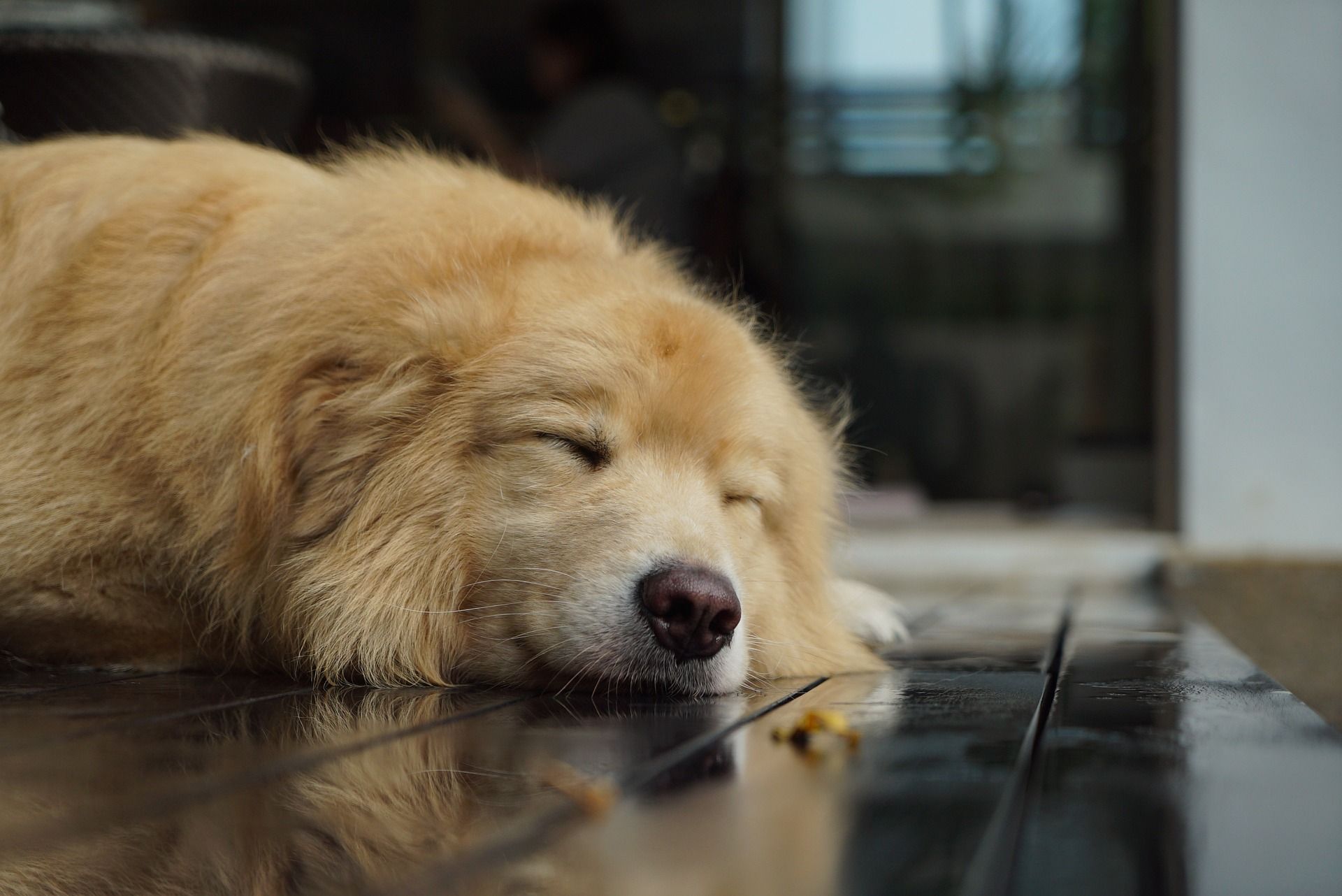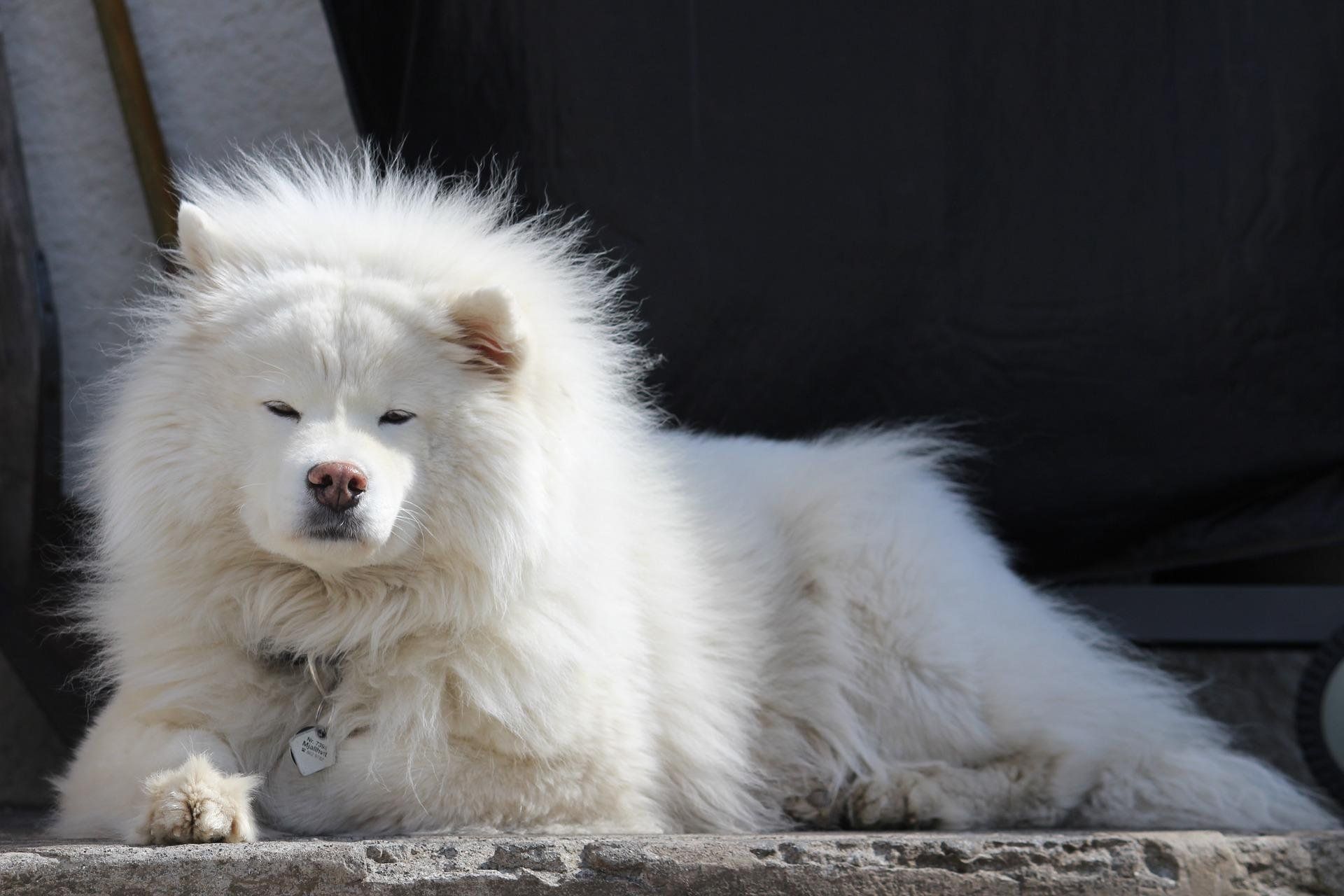If you're considering getting a Samoyed and are concerned about potential drooling, gather information and be prepared. Here's everything you need to know
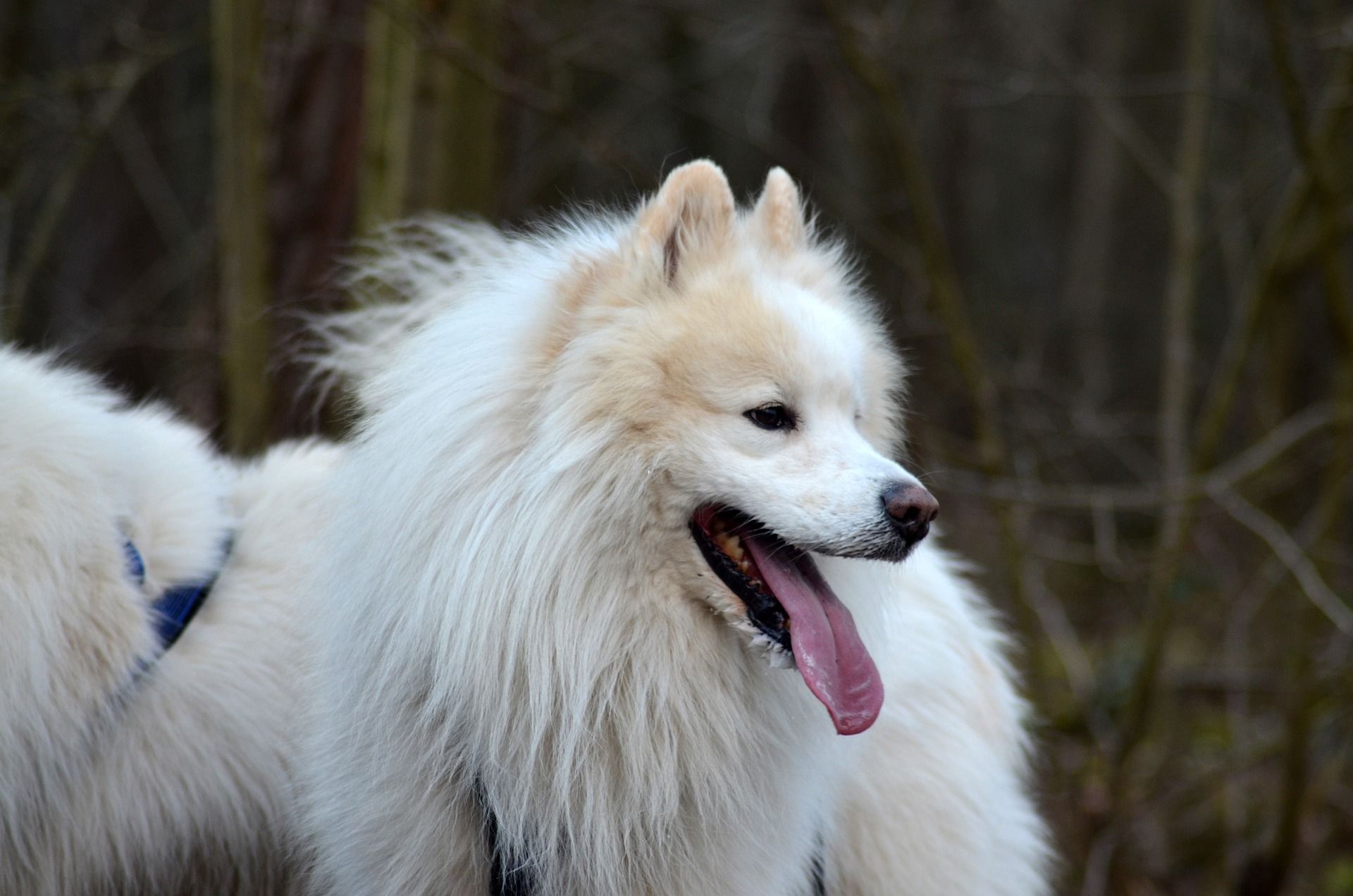
Many Samoyed owners express that drooling is not a major concern for them. They appreciate the fact that Samoyeds are generally clean dogs with minimal drooling tendencies. That said, owners frequently highlight the individual variation in drooling habits among Samoyeds. Some may have dogs that rarely drool, while others may notice slightly more saliva production in specific situations.
Table of Contents
Do Samoyeds Drool?
Samoyeds are not known for excessive drooling.
Generally, they are a relatively clean breed with minimal drooling compared to some other dog breeds. However, individual dogs can vary, and factors such as age, health, and genetics can influence drooling habits.
While Samoyeds are not typically heavy droolers, it’s essential to note that every dog is unique, and there may be exceptions.
If you’re considering getting a Samoyed or have one already, monitoring their health and maintaining good oral hygiene can help manage any potential drooling issues. As we’ll see regular dental care, such as teeth brushing, can contribute to a healthier mouth and reduce the likelihood of excessive drooling.
How Much do Samoyeds drool Compared to Other Breeds?
When comparing the drooling tendencies of Samoyeds to other dog breeds, it’s essential to understand that drooling can vary widely among individual dogs, even within the same breed. Factors such as genetics, health, and individual temperament contribute to a dog’s drooling behavior.
However, we can make generalizations based on breed characteristics. Here’s how Samoyeds compare to other breeds in terms of drooling:
Samoyeds
- Drooling Level: Low to Moderate
- Description: Samoyeds are known for their beautiful, fluffy white coats and distinctive “Sammy smile.” While they do produce saliva like any dog, they are generally not heavy droolers. Their facial structure and lip formation contribute to their lower drooling tendencies. Samoyeds are considered a relatively clean breed in terms of drooling compared to some others.
Low Droolers
Afghan Hound
- Drooling Level: Low
- Description: Afghan Hounds are a sighthound breed known for their elegant appearance. They typically have minimal drooling tendencies, making them similar to Samoyeds in this regard.
Moderate Droolers
Labrador Retriever
- Drooling Level: Moderate
- Description: Labs are known for their friendly nature and are not heavy droolers, but they can exhibit moderate drooling, especially after eating or drinking.
Golden Retriever
- Drooling Level: Moderate
- Description: Golden Retrievers are similar to Labs, showing moderate drooling. Their affectionate and gentle nature makes them popular family pets.
Heavy Droolers
Saint Bernard
- Drooling Level: Heavy
- Description: Large breeds like the Saint Bernard are often associated with significant drooling. The loose skin around their mouths contributes to this trait.
Bloodhound
- Drooling Level: Heavy
- Description: Bloodhounds have loose, hanging skin around their face, and they are known for their keen sense of smell. This breed tends to be a heavy drooler.
Breed-Specific Variations
Bulldogs (English Bulldogs, French Bulldogs)
- Drooling Level: Moderate to Heavy
- Description: Bulldogs, with their distinctive loose jowls, can exhibit moderate to heavy drooling. The severity may vary between individual dogs.
Mastiffs
- Drooling Level: Heavy
- Description: Many Mastiff breeds, such as the English Mastiff or Neapolitan Mastiff, are known for their significant drooling, which is often more pronounced in warmer weather.
While Samoyeds are generally considered low to moderate droolers, it’s crucial to recognize that individual variation exists within any breed.
When choosing a dog based on drooling tendencies, spending time with individual dogs, considering their overall health, and discussing the specific traits with breeders or rescue organizations can provide valuable insights
What Factors Influence Drooling in Samoyeds?
Several factors can influence the amount of drooling in Samoyeds, as well as in dogs in general. While Samoyeds are not typically heavy droolers, and individual variations exist, understanding these factors can provide insights into their drooling tendencies.
#1 — Genetics
- Breed characteristics: Each dog breed has distinct characteristics, including the structure of the mouth, lips, and overall facial anatomy. Breeds with loose skin around the mouth may be more prone to drooling. Samoyeds have a relatively clean facial structure, contributing to their lower drooling tendencies compared to some other breeds.
#2 — Health
- Oral health: The overall oral health of a dog can influence drooling. Dental issues, such as gum disease or tooth decay, may lead to increased salivation. Regular dental care, including teeth brushing and dental check-ups, can help maintain good oral health in Samoyeds.
- Medical conditions: Certain health conditions, such as respiratory issues, allergies, or neurological problems, can affect a dog’s salivation. If a Samoyed starts drooling excessively or suddenly, it’s essential to consult with a veterinarian to rule out any underlying health issues.
#3 — Age
- Puppyhood vs. adulthood: Puppies may drool more than adult dogs due to teething or exploration of their environment. As Samoyeds mature, their drooling habits may change. It’s essential to be patient and observant during different life stages.
#4 — Diet
- Type of food: The type of diet a Samoyed consumes can impact drooling. Wet or canned food may stimulate saliva production more than dry kibble. Ensuring a balanced and appropriate diet for your dog’s age and health is important.
#5 — Temperature and Environment
- Weather conditions: Dogs, including Samoyeds, may drool more in warmer weather. Heat can stimulate salivation as a natural cooling mechanism. Providing shade and ensuring proper hydration can help manage drooling in such conditions.
- Stress or anxiety: Environmental factors, such as stress or anxiety, can also influence drooling. Samoyeds are known for their sociable and friendly nature, but changes in routine, new environments, or separation anxiety can lead to increased salivation.
#6 — Individual Differences
- Temperament: Each dog has its own personality and temperament. While Samoyeds are generally not heavy droolers, individual variations can occur. Some dogs may be more prone to drooling based on their unique traits.
- Habitual behaviors: Certain behaviors, such as panting, may naturally result in increased salivation. Dogs regulate body temperature through panting, and it’s a common behavior, especially in active or excited situations.
Drooling in Samoyeds is influenced by a combination of genetic factors, overall health, age, diet, environmental conditions, and individual differences.
Regular veterinary check-ups, proper dental care, a balanced diet, and understanding the specific needs of your Samoyed can contribute to managing drooling tendencies. If you notice any sudden changes in drooling patterns or suspect underlying health issues, consulting with a veterinarian is recommended
Are Samoyeds Considered Heavy Droolers?
Just to expand on what we saw earlier Samoyeds are not generally considered heavy droolers. Among dog breeds, Samoyeds are known for being relatively clean in terms of drooling compared to some breeds that are prone to excessive salivation.
The structure of their mouths and facial anatomy contributes to their lower drooling tendencies.
Clean Facial Structure
Samoyeds have a clean and well-defined facial structure. Their lips are not excessively loose, and they lack the heavy jowls often seen in breeds that are prone to drooling.
Moderate Drooling Tendencies
While no dog is completely free of drooling, Samoyeds typically fall into the category of breeds with low to moderate drooling tendencies. This means that they may drool occasionally, especially in situations like mealtime or when they are particularly excited, but it is not a prominent characteristic of the breed.
Behavioral and Environmental Factors
Individual variation in drooling can be influenced by factors such as stress, anxiety, or excitement. In certain situations, a Samoyed may produce more saliva, but this is usually temporary and not a consistent trait.
Regular Grooming
Samoyeds have a thick double coat that requires regular grooming. While grooming needs are not directly related to drooling, maintaining good overall hygiene can contribute to a clean and healthy dog.
Personal Experiences
While general breed traits provide a baseline, individual Samoyeds may vary in their drooling habits. Some may be minimal droolers, while others may exhibit slightly more saliva production. This variability can be influenced by factors such as genetics, health, and environmental conditions.
Samoyeds are not considered heavy droolers. They are known for their friendly and sociable nature, and their drooling tendencies are generally on the lighter side compared to breeds that are predisposed to more pronounced salivation.
In What Situations Might Samoyeds Drool?
While Samoyeds are generally not heavy droolers, there are specific situations or scenarios in which they might exhibit drooling behavior. These instances are often natural responses to certain stimuli or conditions.
Here are some situations in which Samoyeds might drool:
#1 — Mealtime
- Anticipation: Like many dogs, Samoyeds may drool in anticipation of meals. The sight and smell of food can stimulate saliva production as part of the digestive process. This is a normal and natural response and is not unique to Samoyeds.
#2 — Excitement
- Play and interaction: Samoyeds are known for their friendly and sociable nature. Excitement during playtime or when interacting with their owners can lead to increased salivation. This is often a temporary response and is part of the dog’s overall enthusiasm.
#3 — Stress or Anxiety
- Nervousness: Some dogs may drool in response to stress or anxiety. Changes in the environment, unfamiliar situations, or being left alone for extended periods may trigger this response. It’s essential to identify and address the underlying cause of stress to help reduce drooling in such situations.
#4 — Heat and Exercise
- Cooling mechanism: Dogs regulate body temperature through panting, which involves increased salivation. In warmer weather or during vigorous exercise, Samoyeds may pant to cool down, leading to a temporary increase in drool. Providing access to shade and ensuring proper hydration can help manage drooling in such conditions.
#5 — Medical Issues
- Dental problems: Pain or discomfort related to dental issues can cause increased drooling. Regular dental care and addressing any dental problems promptly can help manage drooling in these cases.
- Health conditions: Underlying health issues, such as respiratory problems or allergies, can contribute to excessive drooling. If a Samoyed starts drooling unusually, it’s essential to consult with a veterinarian to rule out any medical concerns.
#6 — New or Strong Smells
- Interest in odors: Dogs have a keen sense of smell, and exposure to new or strong odors may trigger increased salivation. This can occur when Samoyeds encounter interesting scents during walks or explore their surroundings.
#7 — Grooming or Bathing
- Discomfort: Some dogs may drool in response to discomfort or stress during grooming or bathing. Ensuring a positive grooming experience and using appropriate grooming techniques can help minimize drooling in these situations.
It’s important to note that occasional drooling in response to these situations is generally normal for dogs, including Samoyeds. However, if there is a sudden or persistent increase in drooling, or if it is accompanied by other concerning symptoms, consulting with a veterinarian is advisable to rule out any underlying health issues.
Is Drooling in Samoyeds a Health Concern?
Drooling in Samoyeds, like in many dog breeds, is a natural and normal behavior in certain situations, such as mealtime, excitement, or exposure to new scents. However, both occasional and excessive drooling can be indicative of health concerns in Samoyeds, and pet owners should be attentive to changes in drooling patterns.
Normal Drooling
- Occasional drooling: Occasional drooling in response to specific stimuli, such as food, play, or excitement, is generally normal for Samoyeds. This type of drooling is temporary and does not raise significant health concerns.
Situational Factors
- Weather and exercise: During warmer weather or after vigorous exercise, Samoyeds may pant and drool as a natural cooling mechanism. This is typically not a cause for concern but should be managed by providing a cool and shaded environment, as well as ensuring proper hydration.
- Grooming and bathing: Some dogs may drool in response to stress during grooming or bathing. While this is not uncommon, ensuring a positive grooming experience and monitoring for signs of stress is important.
Health Concerns
- Dental issues: Persistent or excessive drooling, especially if accompanied by signs of discomfort while eating or pawing at the mouth, could be indicative of dental problems such as gum disease, tooth decay, or an oral infection. Regular dental care and veterinary check-ups are crucial for maintaining good oral health.
- Respiratory problems: Respiratory issues, such as infections or allergies, can lead to increased drooling. If a Samoyed is coughing, wheezing, or displaying difficulty breathing along with excessive drooling, it may signal a respiratory problem requiring veterinary attention.
- Gastrointestinal distress: Digestive issues, nausea, or gastrointestinal problems can sometimes cause increased drooling. Other signs such as vomiting, diarrhea, or changes in appetite may accompany this, indicating a need for veterinary evaluation.
- Heatstroke: In extreme cases, excessive drooling, along with heavy panting and lethargy, could be a sign of heatstroke, which is a medical emergency. Immediate veterinary attention is required in such situations.
Behavioral Factors
- Stress or anxiety: Chronic stress or anxiety may lead to excessive drooling in some dogs. Identifying and addressing the underlying cause of stress is crucial for the well-being of the Samoyed.
When to Seek Veterinary Attention
- Sudden changes: If a Samoyed starts drooling excessively without an apparent cause or if there is a sudden increase in drooling, it warrants veterinary attention.
- Accompanying symptoms: If excessive drooling is accompanied by other concerning symptoms, such as lethargy, changes in behavior, or difficulty eating, it may indicate an underlying health issue.
- Persistent drooling: If drooling persists for an extended period, especially if it is unrelated to specific situations or stimuli, a veterinary examination is advisable to rule out health problems.
While occasional drooling in response to certain situations is normal for Samoyeds, pet owners should be vigilant for changes in drooling patterns or the presence of other concerning symptoms. Regular veterinary check-ups, good oral hygiene, and a healthy lifestyle can contribute to the overall well-being of Samoyeds.
Can Drooling in Samoyeds be Managed or Controlled?
Yes. While drooling is a natural behavior in dogs, including Samoyeds, there are steps that owners can take to manage or control drooling behaviors, especially if they find it excessive or bothersome.
Here are some strategies that may help in managing drooling in Samoyeds:
- Regular dental care: Maintaining good oral hygiene is essential to prevent dental issues that could contribute to drooling. Brushing your Samoyed’s teeth regularly, providing dental chews, and scheduling professional dental cleanings can help keep their mouths healthy.
- Proper nutrition: Providing a balanced and appropriate diet for your Samoyed’s age, size, and health needs can contribute to overall well-being. High-quality dry kibble can be less likely to stimulate excessive drooling compared to wet or canned food.
- Hydration: Ensure that your Samoyed has access to clean and fresh water at all times. Proper hydration can help maintain normal saliva production and prevent excessive drooling associated with dehydration.
- Temperature control: During warmer weather, provide a cool and shaded environment for your Samoyed. Avoid excessive exercise during the hottest parts of the day, and make sure your dog has access to water to help manage panting and drooling as a natural cooling mechanism.
- Stress management: Identify and address sources of stress or anxiety that may contribute to excessive drooling. Providing a comfortable and secure environment, incorporating regular exercise, and using positive reinforcement techniques can help manage stress.
- Grooming: Regular grooming can help keep your Samoyed clean and reduce the likelihood of drooling associated with discomfort. Keep the facial area clean, check for any signs of irritation, and address any issues promptly.
- Veterinary check-ups: Schedule regular veterinary check-ups to monitor your Samoyed’s overall health. If drooling patterns change suddenly or persist, it’s crucial to consult with a veterinarian to rule out any underlying health issues.
- Training: Training your Samoyed to have good manners during mealtime can reduce drooling associated with excitement. Use commands such as “wait” or “stay” to encourage calm behavior before receiving meals or treats.
- Breed characteristics: Understand and appreciate the natural characteristics of the Samoyed breed. While they are not typically heavy droolers, individual variation exists. Being aware of their normal behavior can help you differentiate between typical drooling and potential health concerns.
- Addressing medical issues: If you notice persistent or unusual drooling, especially if accompanied by other symptoms, consult with a veterinarian. Addressing any underlying medical issues promptly is essential for your Samoyed’s health.
It’s important to note that drooling is a normal part of a dog’s behavior, and complete elimination may not be possible or necessary. The goal is to manage drooling to a level that is comfortable for both the dog and the owner. If in doubt seek advice.
Do Samoyed Puppies Drool More Than Adults?
In general, Samoyed puppies may drool more than adults, especially during specific developmental stages.
Here are some factors to consider regarding drooling habits in Samoyed puppies compared to adults:
#1 — Teething Stage
- Puppy drooling: During the teething stage, which typically occurs around 3 to 6 months of age, puppies may drool more than usual. Teething can be uncomfortable, and the increased production of saliva is a natural response to the irritation caused by emerging teeth.
#2 — Exploration and Learning
- Curiosity and mouthing: Puppies use their mouths to explore the world, and this exploration can involve mouthing and chewing various objects. Increased mouthing behavior may lead to more drooling during the puppy stage.
#3 — Excitement and Playfulness
- Puppy energy: Puppies are known for their high energy levels and enthusiasm. Playful interactions and excitement during playtime can stimulate saliva production, resulting in more drooling compared to calmer adult dogs.
#4 — Development of Habits
- Training period: As puppies go through their training and socialization periods, they may learn habits that can influence drooling. For example, the anticipation of treats or meals during training sessions may lead to increased drooling.
#5 — Adolescent Stage
- Transition to adulthood: As Samoyed puppies mature into adolescence and adulthood, their drooling habits may change. Most dogs, including Samoyeds, tend to settle into more predictable drooling patterns as they reach adulthood.
If you find that your Samoyed puppy is drooling excessively or in a manner that seems unusual or uncomfortable, it’s advisable to monitor for other signs of distress and consult with a veterinarian.
How Can Prospective Owners Prepare for Samoyed Drooling?
If you’re considering getting a Samoyed and are concerned about potential drooling, it’s essential to gather information and be prepared for the breed’s general characteristics. While Samoyeds are not heavy droolers compared to some other breeds, individual variations exist, and it’s helpful to know what to expect.
Here are some tips for prospective Samoyed owners to prepare for potential drooling:
- Research the breed: Understand the characteristics of the Samoyed breed, including their temperament, exercise needs, grooming requirements, and typical drooling tendencies. This information will help you make an informed decision about whether a Samoyed is the right fit for your lifestyle.
- Interact with Samoyeds: Spend time with individual Samoyeds if possible. This could involve visiting breeders, attending dog shows, or meeting Samoyed owners in your community. Interacting with the breed will give you a firsthand experience of their behavior, including any drooling habits.
- Discuss with breeders: When communicating with breeders, inquire about the specific traits of their Samoyeds, including drooling tendencies. Reputable breeders are often knowledgeable about the characteristics of their dogs and can provide insights into individual variation.
- Visit Samoyed events: Attend events or gatherings where Samoyeds are present. This could include dog shows, meet-and-greets, or breed-specific events. Observing the behavior of multiple Samoyeds in different settings can give you a more comprehensive understanding of the breed.
- Prepare for puppy teething: Understand that Samoyed puppies, like most breeds, may drool more during the teething stage. Be prepared for this natural behavior, and provide appropriate teething toys to help alleviate discomfort.
- Maintain good oral hygiene: Establish a routine for good oral hygiene from an early age. Regular teeth brushing, dental chews, and veterinary check-ups can contribute to overall oral health and help manage drooling associated with dental issues.
- Be mindful of excitement levels: Samoyeds are known for their playful and excitable nature. While they are not typically heavy droolers, they may exhibit more saliva production during times of excitement. Be prepared for occasional drooling in situations such as playtime or receiving treats.
- Monitor health: Stay vigilant about your Samoyed’s overall health. Sudden changes in drooling patterns, especially if accompanied by other concerning symptoms, should prompt a visit to the veterinarian to rule out any underlying health issues.
- Positive reinforcement training: Implement positive reinforcement training techniques to encourage calm behavior, especially during mealtime or when receiving treats. This can help manage drooling associated with excitement.
- Embrace individual variation: Recognize that each Samoyed is unique, and there may be individual variation in drooling habits. Some Samoyeds may rarely drool, while others may exhibit slightly more saliva production. Understanding and accepting this variation is key to being a responsible and informed owner.
By taking these steps, prospective Samoyed owners can better prepare for potential drooling and make informed decisions about whether the breed aligns with their preferences and lifestyle.
Remember that responsible ownership, proper grooming, and attention to your Samoyed’s overall health contribute to a positive experience with the breed.
